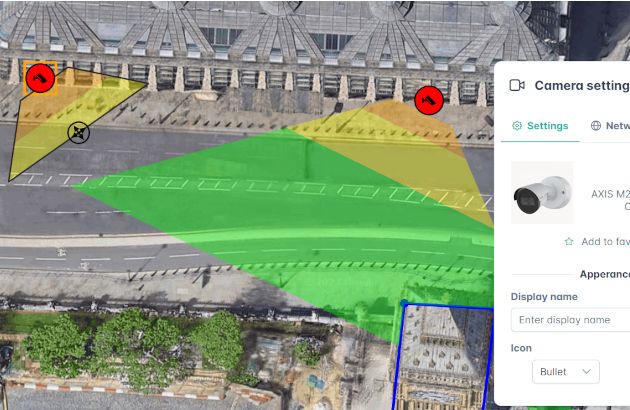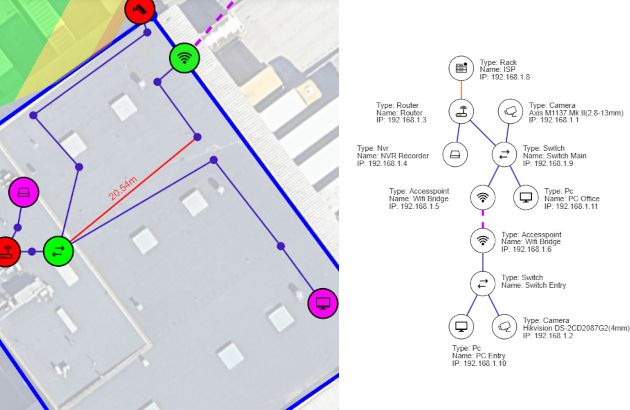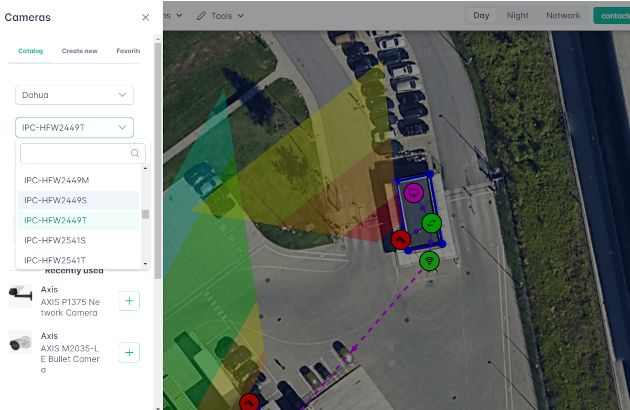
A powerful tool
for designing
camera layouts
An innovative CCTV design software that turns complex security designs into simple, effective layouts.
Get StartedTrusted by over 5000+ clients across the world







Boost
your conversions



Our software ensures your price proposals stand out with stunning layouts.
As the most affordable CCTV design tool on the market, our software offers an unbeatable combination of cost-efficiency and powerful features, enabling you to create visuals that make your proposals shine.
- Cost-effective and feature-rich
- Proven to boost conversions
- Accessible, web-based platform
- New features added regularly
Our Community
Customer satisfaction is our major goal. See what our clients are saying about our services.
Try it and seeAll-in-One Solution
Plan layouts, networks, and cables in one platform.
Affordable and Powerful
Get premium features at a fraction of the cost.
Boost Client Impressions
Clients love visualized, professional proposals.
ABOUT APP
Optimize your CCTV design process and amaze your clients
Our web-based CCTV design tool is affordable, easy to use, and packed with powerful features. Not only can you design CCTV system layouts, but you can also plan your entire network infrastructure and cable routes—all in one platform. Creating projects is quick and straightforward, allowing you to generate detailed reports with just a few clicks. These reports, complete with visualizations, can be seamlessly included in your client proposals.
Clients love the clarity and professionalism that comes with these visuals, helping you stand out and win more business.
Learn MoreSee it in action
Explore the key features of our CCTV design tool through these screenshots.

Why Use CCTV Design Tool?
Modern tools for modern security professionals
Clients appreciate working with professionals who demonstrate thorough planning. Including layouts in your proposals shows that you have everything well thought out, building trust and confidence in your services.
Avoid costly mistakes by planning your installations in advance. How often have you forgotten to order something or missed an unforeseen situation that ended up costing you?
One image speaks louder than a thousand words, and with CCTV Design Tool, creating visuals takes only moments.
Our Pricing
Get started with our powerful CCTV design tool, designed to meet the needs of security professionals.
Start with our free cctv design tool version and use it with limited features. Upgrade to a paid plan for more.
Go to applicationMonthly
Yearly (Save 60%)
Free Version Plan
- 3 cameras in project
- 3 devices in project
- 3 pages in report
- Share projects
- Save projects
- No watermark
- Night preview
- Priority support
Premium Plan
- Unlimited cameras in project
- Unlimited devices in project
- Unlimited pages in report
- Share projects
- Save projects
- No watermark
- Night preview
- Priority support
FAQ
Have More Questions?
If you don’t see an answer to your question, don’t worry! You can send us a ticket directly through the app, and our team will assist you promptly.
All FAQNo credit card is required to use the free version. You can explore the basic features at no cost and upgrade to the premium plan when you're ready.
Yes, all updates and new features are included with the premium plan at no additional cost. The app is updated regularly with new features and new brands added to the camera database, ensuring you always have access to the latest tools and improvements.
We provide a detailed training video to help you get started, and our support team is always ready to assist. If you have any questions or run into any issues, just submit a ticket within the app, and we’ll be there to help.
Yes, absolutely! Just send us a ticket with the brand name, and we'll add it to our database. It usually takes 2-5 days to include a new manufacturer.











